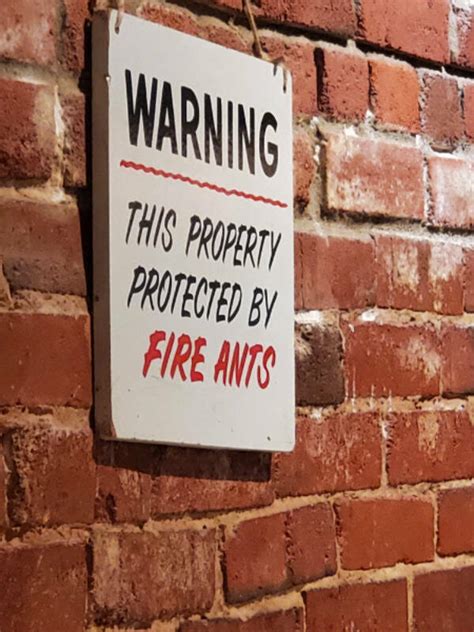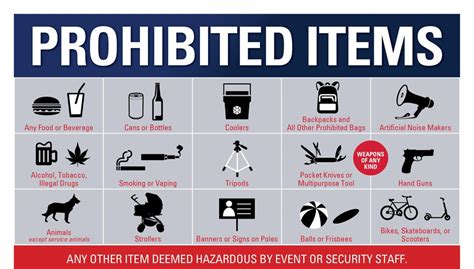
Humorous signage is capturing attention online, proving that wit can be found in the most unexpected places. A collection of 17 unintentionally funny signs has gone viral, showcasing the creativity and occasional absurdity of everyday communication. These signs, ranging from misspelled instructions to oddly specific warnings, offer a lighthearted look at the world and highlight the humor that can be found in simple, everyday scenarios.
The signs, compiled from various online sources, demonstrate the power of unintentional comedy. Many feature grammatical errors or awkward phrasing that completely alters the intended meaning, resulting in laugh-out-loud moments for those who encounter them. Others are funny simply because of their context, such as a sign with a very peculiar or uncommon warning.
One example of the hilarious signs is a misspelled sign saying “Slipery when wet”. Another sign points to a “duck crossing”, but it’s just a picture of a duck.
The viral collection serves as a reminder that humor can be found in the most mundane aspects of life. The shared amusement also highlights the human tendency to find connection through laughter and to appreciate the unexpected moments of levity that break up the seriousness of daily life. Here’s a more detailed look at some of the signs that have sparked so much laughter.
Specific Examples of Humorous Signs
The collection includes a diverse array of signs, each with its own unique brand of humor.
-
Misspellings and Grammatical Errors: These signs often elicit laughter because they demonstrate a lack of attention to detail or a simple misunderstanding of spelling and grammar rules. For instance, a sign misspelling “slippery” as “slipery” transforms a straightforward warning into a comical observation. These errors are particularly amusing when the sign’s purpose is to convey important information or instructions.
-
Awkward Phrasing and Wording: Sometimes, the humor comes not from outright errors but from the way the message is phrased. Signs with overly formal or overly casual language in inappropriate contexts can be surprisingly funny. Similarly, signs that attempt to be clever but miss the mark can also generate laughter.
-
Oddly Specific Warnings: These signs are often hilarious because they suggest unusual or improbable scenarios. A sign warning against a specific activity, such as “Do not juggle flaming torches while riding a unicycle,” implies that this is a common enough occurrence to warrant a warning. The more specific and outlandish the warning, the funnier the sign tends to be.
-
Signs with Unintended Double Meanings: These signs rely on the ambiguity of language to create humor. A sign that can be interpreted in multiple ways, one of which is humorous or inappropriate, can lead to amusement and surprise. The humor often arises from the contrast between the intended meaning and the unintended interpretation.
-
Signs with Absurd Juxtapositions: These signs create humor by placing contrasting or incongruous elements side by side. For example, a sign that combines a serious warning with a cartoonish image can be unexpectedly funny. The juxtaposition of the serious and the silly creates a sense of absurdity that resonates with viewers.
-
The “Duck Crossing” Sign: A sign posted that simply displays a picture of a duck, with the words “Duck Crossing” underneath.
The Psychology of Humor in Signs
The widespread appeal of these funny signs raises interesting questions about the psychology of humor. Why do we find these unintentional errors and absurdities so amusing? Several factors may contribute to the humor:
-
Surprise and Incongruity: According to the incongruity theory of humor, we find things funny when they violate our expectations or challenge our understanding of the world. A misspelled word or an oddly specific warning disrupts our cognitive patterns and creates a sense of surprise. This surprise, in turn, can trigger a humorous response.
-
Superiority Theory: This theory suggests that we laugh at others’ misfortunes or mistakes because it makes us feel superior. While not all humor relies on superiority, some of the funny signs may appeal to this aspect of our psychology. We might laugh at a misspelled sign because we perceive ourselves as being more knowledgeable or competent in spelling.
-
Relief Theory: This theory proposes that humor serves as a release of pent-up tension or anxiety. In a world filled with stress and uncertainty, finding humor in everyday situations can provide a sense of relief and relaxation. The funny signs offer a brief escape from the seriousness of life and allow us to laugh at the absurdities around us.
-
Shared Experience and Social Connection: Humor often serves as a social lubricant, bringing people together and fostering a sense of community. When we share a laugh with others, we create a bond and reinforce our shared understanding of the world. The viral nature of these funny signs suggests that they resonate with a wide audience, creating a shared experience of amusement and connection.
The Role of Social Media in Amplifying Humor
Social media platforms have played a crucial role in amplifying the reach and impact of these funny signs. The ability to easily share images and videos with a global audience has transformed the way we consume and interact with humor.
-
Viral Spread: Social media allows funny content to spread rapidly from one person to another. A single post featuring a humorous sign can quickly go viral, reaching millions of viewers in a matter of hours. This rapid dissemination of content creates a sense of collective amusement and shared experience.
-
User-Generated Content: Social media platforms encourage users to create and share their own content. This has led to an explosion of funny signs being documented and shared online. People are constantly on the lookout for humorous signs in their daily lives, knowing that they can potentially capture and share these moments with a vast audience.
-
Community Building: Social media platforms also facilitate the formation of online communities centered around shared interests. There are numerous groups and pages dedicated to sharing and discussing funny signs, creating a space for people to connect and bond over their shared sense of humor.
-
Increased Awareness: The widespread sharing of funny signs on social media has increased awareness of the humor that can be found in everyday situations. People are now more likely to notice and appreciate the unintentional comedy that surrounds them.
The Impact on Signage and Communication
While the funny signs are primarily a source of entertainment, they also have implications for the field of signage and communication. The viral collection serves as a reminder of the importance of clarity, accuracy, and attention to detail in all forms of written communication.
-
Importance of Proofreading: The misspelled signs highlight the need for careful proofreading and editing. Even a single error can undermine the credibility of a sign and transform its message into a source of amusement. Sign makers and businesses should invest in thorough proofreading processes to ensure that their signs are free of errors.
-
Clarity and Conciseness: The awkwardly worded signs demonstrate the importance of clear and concise language. Signs should be written in a way that is easy to understand and avoids ambiguity. Overly formal or overly casual language can confuse readers and detract from the sign’s intended message.
-
Target Audience Considerations: The funny signs also underscore the importance of considering the target audience when designing and writing signs. The language and tone of a sign should be appropriate for the intended audience. A sign that is meant to be informative should avoid humor or sarcasm, while a sign that is meant to be entertaining can embrace these elements.
-
The Power of Visuals: In addition to the written content, the visuals on a sign can also contribute to its effectiveness and humor. The juxtaposition of serious warnings with cartoonish images, or the use of unexpected fonts and colors, can create a sense of absurdity that resonates with viewers.
The Enduring Appeal of Unintentional Humor
The viral collection of funny signs is just one example of the enduring appeal of unintentional humor. From malapropisms to awkward situations, we often find the greatest amusement in the things that are not meant to be funny.
-
Authenticity and Realness: Unintentional humor often feels more authentic and real than staged or scripted humor. It arises spontaneously from everyday situations and reflects the imperfections and absurdities of life. This authenticity can make it particularly relatable and appealing to audiences.
-
Universality: Unintentional humor often transcends cultural and linguistic barriers. While some forms of humor may be specific to a particular culture or language, the humor found in misspellings, awkward situations, and unexpected juxtapositions tends to be more universal. This is because it relies on fundamental aspects of human psychology and cognition.
-
A Reminder to Not Take Life Too Seriously: In a world that often feels overwhelming and stressful, unintentional humor serves as a reminder to not take life too seriously. It allows us to laugh at our mistakes, appreciate the absurdities around us, and find joy in the simple things.
In conclusion, the collection of 17 funny signs that has gone viral online demonstrates the power of unintentional humor. These signs, with their misspellings, awkward phrasing, and oddly specific warnings, offer a lighthearted look at the world and highlight the humor that can be found in everyday situations. The shared amusement underscores the human tendency to find connection through laughter and to appreciate the unexpected moments of levity that break up the seriousness of daily life.
Frequently Asked Questions (FAQ)
-
What makes a sign funny unintentionally? Unintentional humor in signs often arises from misspellings, grammatical errors, awkward phrasing, oddly specific warnings, unintended double meanings, or absurd juxtapositions. These elements create a sense of surprise and incongruity, violating our expectations and leading to amusement. As stated previously, one example includes the misspelled word “slipery” instead of slippery.
-
Why do people find humor in these types of signs? Psychological theories suggest that we find humor in these signs due to factors like surprise, incongruity, a sense of superiority (laughing at others’ mistakes), and relief from tension. Sharing these humorous signs also fosters social connection and a sense of community.
-
How has social media impacted the popularity of funny signs? Social media has amplified the reach of funny signs through viral spread, user-generated content, community building, and increased awareness. The ability to easily share and discuss these signs has created a collective experience of amusement.
-
What can businesses and sign makers learn from these funny signs? Businesses and sign makers can learn the importance of proofreading, clear and concise language, considering the target audience, and the potential impact of visuals in creating effective and error-free signage.
-
Is there a cultural element to what people find funny in signs? While some forms of humor are culturally specific, the humor found in misspellings, awkward situations, and unexpected juxtapositions tends to be more universal. It relies on fundamental aspects of human psychology and cognition, making it relatable across different cultures.









